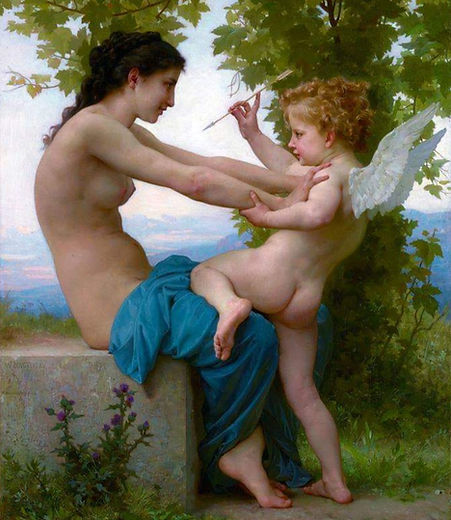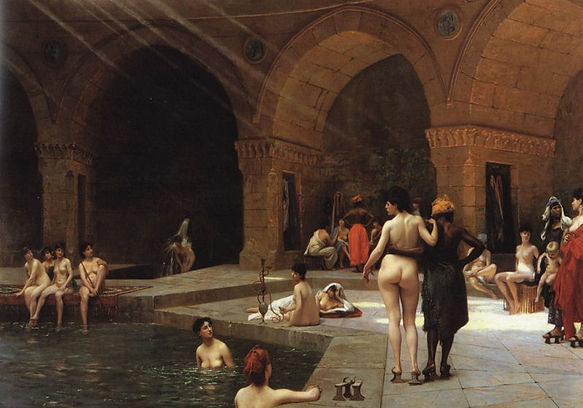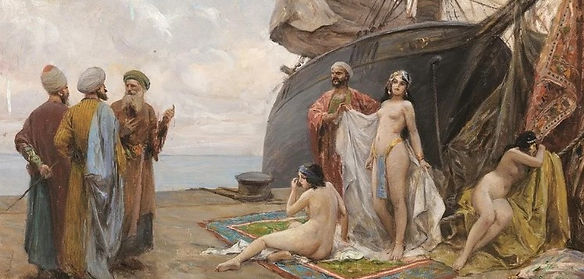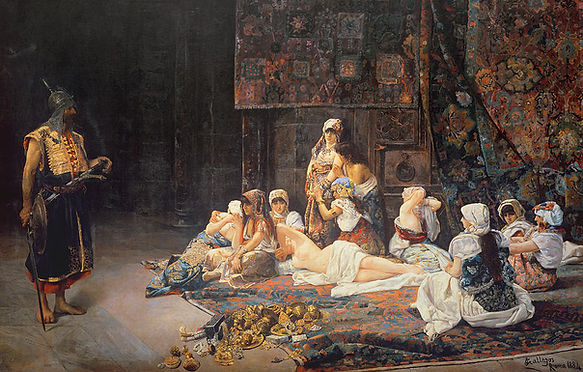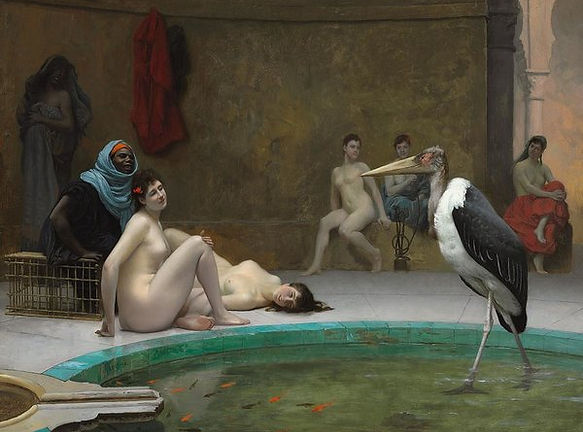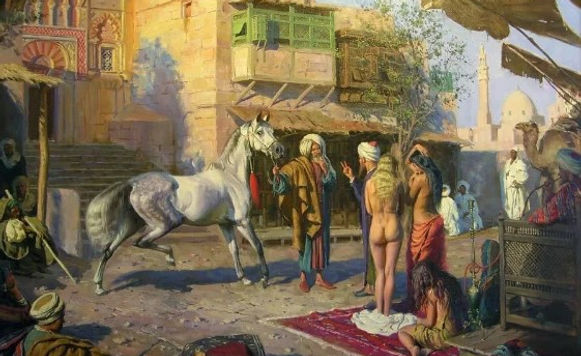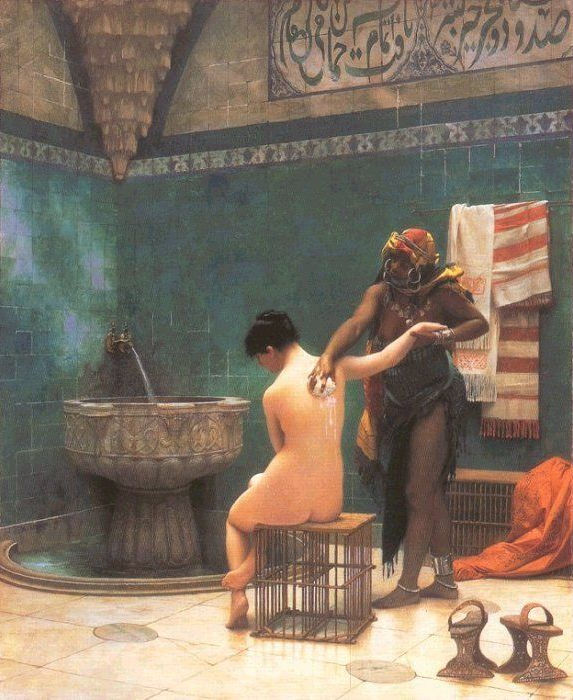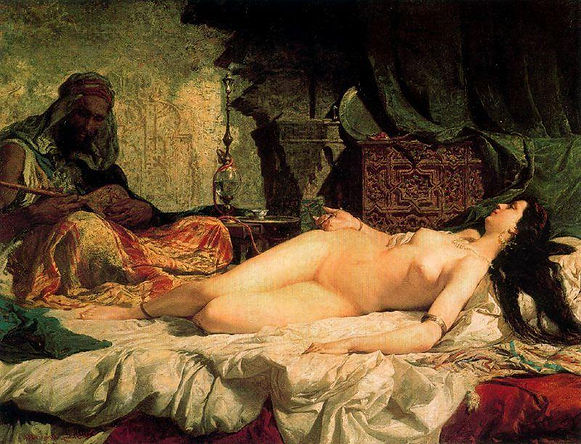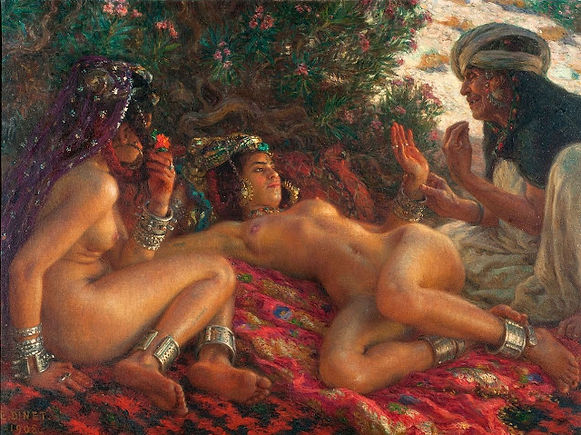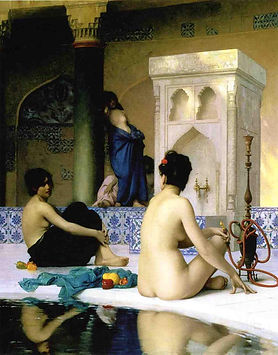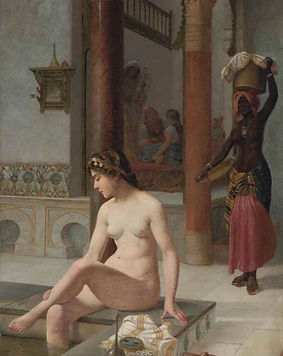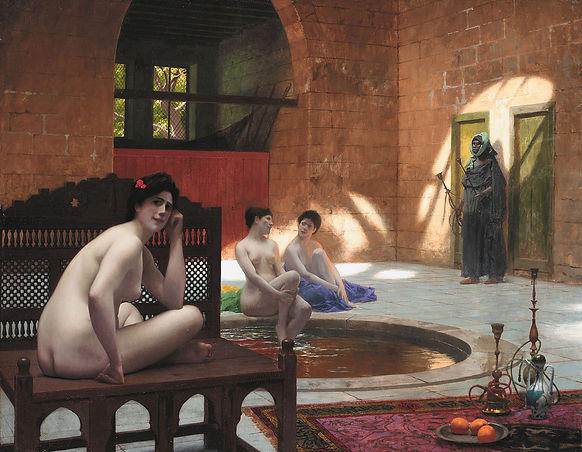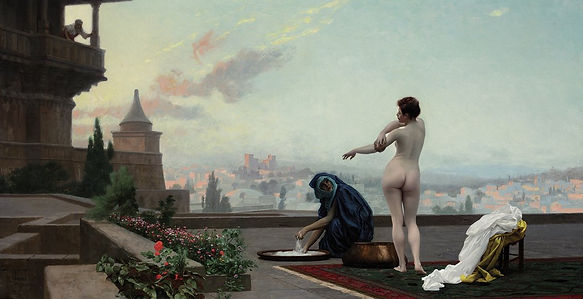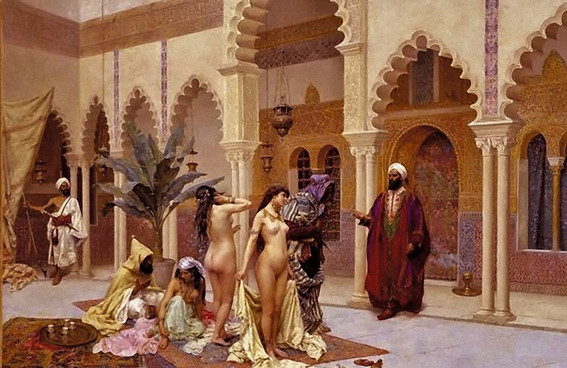

erotıcısm ın art
The nudity of males and more preferably females had been one of the most intriguing enigmas of social life. Especially the ancient drawings or stone carved scenes depicting nudity of females had been used for centuries to focus on the fertility of women who were already being accepted a sacred creatures. Those kind of figures which had been used to depict females were generally far from being erotic and more close to sacrecy of women considering that they were generally consisting fat and big breasted female figures or figurines without details on the faces.
The monotheist religions and also their shades over women, weren't present yet . Therefore, the nudity of women and men, and sometimes sexual relationships between them could be depicted easily and freely by the artists of those times like painters, sculptors and poets.
Historically, there have always been pockets of eroticism in art. The infamous frescoes of doomed Pompeii, for example, featured oversized erections and sex acts, and artists in India, China and Japan have long captured explicit sex scenes freely and beautifully. Sumerians have also used the nudity of women and men on their paintings and poets.





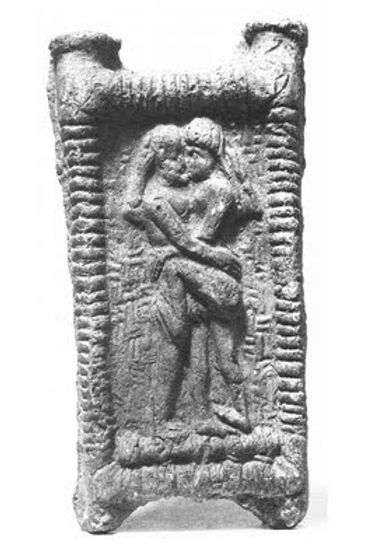
when the time of monotheistic religions come, the Greek God Eros has lost and a shade of theese new religions has dropped over the liberty on art which was guite free to depict such scenes like nudity or sexual actions.
During the medieval ages, the shade over the art had remained. Following the renaissance the shade has been weakened but the habits were still awake. drawing, talking, writing about sex and erotism was still a sin or pervercy.
One of the first solutions in order to be able to reflect the nudity and erotism, was to hide it behind a more powerful concept. That conceot was art. Depicting them in artworks made the nudity and erotism look a bit more diluted sin.
In 1862, French painter Edouard Manet sparked a scandal when he unveiled a painting of a picnic where a naked woman sits between two clothed men named as "Déjeuner sur l'Herbe".
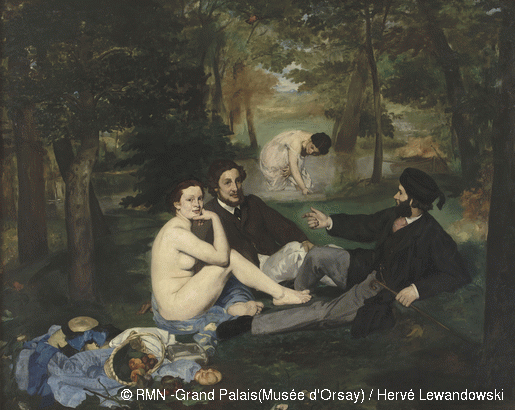
30 years later, Gustave Rodin created "Le Baiser"("The Kiss") -- a sculpture of two nude embracing lovers -- as an official commission for the French government.

Erotic art went on and played an essential and inescapable role in the artistic revolution of the 20th century.
Paul Gaugin started his colorful Tahitian nudes in the 1890s, and Gustav Klimt and his protégé Egon Schiele led the way in Vienna in the early 1900s. Then came the paintings of Picasso, the surrealists.
Before them, during the 19th century, orientalist artists have commonly used female nudity on their artworks. Their main concepts were especially ''The Harem'' and ''Slave Bazaar'' which were appropriate to hide the nudity as a secondary message behind the real depictions. Below are the samples of some 19th century painters;
